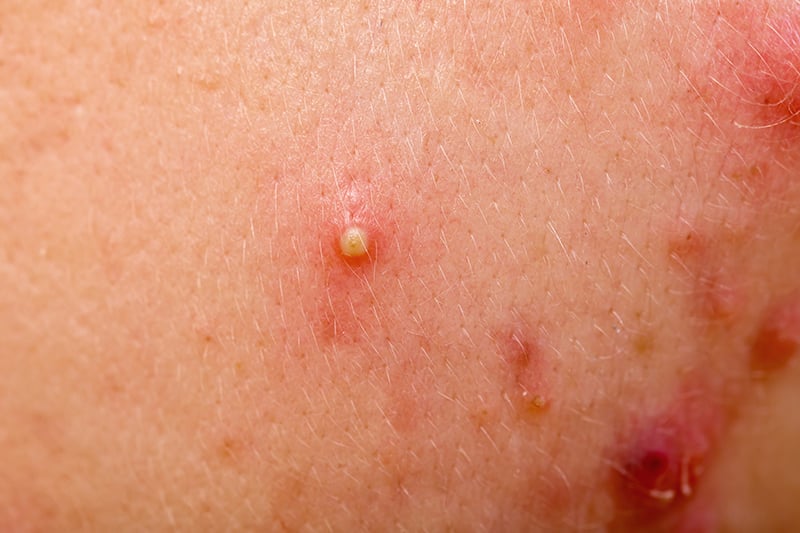Dermatologists treat a wide variety of skin complex conditions. There are many challenges associated with reporting diagnoses such as the specificity and granularity of ICD-10 codes. Relying on a medical coding company that specializes in dermatology medical billing and coding can ensure error-free, timely claim submission.
Let’s take a look at the ICD-10 codes for 7 common skin conditions
ICD-10 Codes for Common Skin disorders
- Acne
Acne is a most common skin disease in the United States. It usually begins during puberty and affects many adolescents and young adults. According to American Academy of Dermatology Association (AAD), almost 50 million people struggle with acne every year. Over-active sebaceous glands, abnormal shedding of dead skin cells, multiplication of acne causing bacteria are the reasons for acne. The ICD-10 codes for acne are as follows:
- L70 Acne
- L70.0 Acne vulgaris
- L70.1 Acne conglobata
- L70.2 Acne varioliformis
- L70.3 Acne tropica
- L70.4 Infantile acne
- L70.5 Acné excoriée
- L70.8 Other acne
- L70.9 Acne, unspecified
- Sunburn
Sunburn is a serious skin condition that can alter its behavior to cancer. According to certain reports, almost half of the population in America is under treatment for sunburn. Too much exposure to UV rays might damage the deeper cells of the skin and cause sunburn. ICD-10 codes for effective documentation for claim submission are as follows:
- L55 Sunburn
- L55.0 Sunburn of first degree
- L55.1 Sunburn of second degree
- L55.2 Sunburn of third degree
- L55.9 Sunburn, unspecified
- Atopic Dermatitis
One in 10 people in the U.S. develops atopic dermatitis during their lifetime. According to the AAD, this condition affects 25% of children and 3% of adults. It is also known as eczema. A combination of factors such as immune system activation, genetics, environmental condition, stress cause Atopic dermatitis. The ICD-10 codes for this condition include:
- L20 Atopic dermatitis
- L20.0 Besnier’s prurigo
- L20.8 Other atopic dermatitis
- L20.81 Atopic neurodermatitis
- L20.82 Flexural eczema
- L20.83 Infantile (acute) (chronic) eczema
- L20.84 Intrinsic (allergic) eczema
- L20.89 Other atopic dermatitis
- L20.9 Atopic dermatitis, unspecified
- Rosacea
In the U.S., rosacea is a common skin condition among citizens. According to AAD, almost 16 million people are under treatment for this skin condition. This medical condition can develop irrespective of age, gender and race. The specific group of people who falls under the risk category of rosacea is:
- People of age group between 30 and 60
- Individuals who are fair and have blond hair and blue eyes.
- Women who are at the stage of menopause
- Those having a family history of rosacea
Although the causes of rosacea are unclear, it is assumed that an overactive immune system and hereditary and environmental factors are responsible for the condition. The ICD-10 codes for rosacea are:
- L71 Rosacea
- L71.0 Perioral dermatitis
- L71.1 Rhinophyma
- L71.8 Other rosacea
- L71.9 Rosacea, unspecified
- Shingles
Shingles or herpez zoster is a skin condition that affects 1 in 3 people in the U.S. (CDC). Though most people are affected only once in their lifetime, there is a risk of the condition recurring. Older adults are in the high risk category as they have a weakened immune system. The condition is caused by varicella-zoster virus. The ICD-10 codes for shingles are as follows:
- B02 Zoster [herpes zoster]
- B02.0 Zoster encephalitis
- B02.1 Zoster meningitis
- B02.2 Zoster with other nervous system involvement
- B02.21 Postherpetic geniculate ganglionitis
- B02.22 Postherpetic trigeminal neuralgia
- B02.23 Postherpetic polyneuropathy
- B02.24 Postherpetic myelitis
- B02.29 Other postherpetic nervous system involvement
- B02.3 Zoster ocular disease
- B02.30 …… unspecified
- B02.31 Zoster conjunctivitis
- B02.32 Zoster iridocyclitis
- B02.33 Zoster keratitis
- B02.34 Zoster scleritis
- B02.39 Other herpes zoster eye disease
- B02.7 Disseminated zoster
- B02.8 Zoster with other complications
- B02.9 Zoster without complications
- Athlete’s Foot
Athlete’s foot or tinea pedis is a common condition caused by a fungus called dermatophytes. According to National Center for Biotechnology Information (NCBI), almost 3% to 15% of the U.S. population has an athlete’s foot. Estimates also suggest that 70% of the population will get athlete’s foot at some point in their lifetime. The ICD-10 code for athlete’s foot is:
- B35.3 Tinea pedis
- Basal Cell Carcinoma
Basal cell carcinoma is a common type of skin cancer caused by the mutation of DNA in basal cells. According to the American Cancer Society, every year, about 5.4 million people are diagnosed with basal cell carcinoma. The ICD-10 codes for Basal Cells Carcinoma are as follows:
- C44.01 Basal cell carcinoma of skin of lip
- C44.11 Basal cell carcinoma of skin of eyelid, including canthus
- C44.111 Basal cell carcinoma of skin of unspecified eyelid, including canthus
- C44.112 Basal cell carcinoma of skin of right eyelid, including canthus
- C44.1121 Basal cell carcinoma of skin of right upper eyelid, including canthus
- C44.1122 Basal cell carcinoma of skin of right lower eyelid, including canthus
- C44.119 Basal cell carcinoma of skin of left eyelid, including canthus
- C44.1191 Basal cell carcinoma of skin of left upper eyelid, including canthus
- C44.1192 Basal cell carcinoma of skin of left lower eyelid, including canthus
- C44.21 Basal cell carcinoma of skin of ear and external auricular canal
- C44.211 Basal cell carcinoma of skin of unspecified ear and external auricular canal
- C44.212 Basal cell carcinoma of skin of right ear and external auricular canal
- C44.219 Basal cell carcinoma of skin of left ear and external auricular canal
- C44.31 Basal cell carcinoma of skin of other and unspecified parts of the face
- C44.310 Basal cell carcinoma of skin of unspecified parts of the face
- C44.311 Basal cell carcinoma of skin of the nose
- C44.319 Basal cell carcinoma of skin of other parts of the face
- C44.41 Basal cell carcinoma of skin of the scalp and ne
- C44.51 Basal cell carcinoma of skin of the trunk
- C44.510 Basal cell carcinoma of anal skin
- C44.511 Basal cell carcinoma of skin of the breast
- C44.519 Basal cell carcinoma of skin of other parts of the trunk
- C44.61 Basal cell carcinoma of skin of upper limb, including shoulder
- C44.611 Basal cell carcinoma of skin of unspecified upper limb, including shoulder
- C44.612 Basal cell carcinoma of skin of right upper limb, including shoulder
- C44.619 Basal cell carcinoma of skin of left upper limb, including shoulder
- C44.71 Basal cell carcinoma of skin of lower limb, including hip
- C44.711 Basal cell carcinoma of skin of unspecified lower limb, including hip
- C44.712 Basal cell carcinoma of skin of right lower limb, including hip
- C44.719 Basal cell carcinoma of skin of left lower limb, including hip
- C44.81 Basal cell carcinoma of overlapping sites of skin
- C44.91 Basal cell carcinoma of the skin, unspecified
There are many skin conditions and each has its own ICD-10 codes and sub-codes and coders need to be vigilant when helping physicians report them on claims. On their part, dermatologists need to ensure proper documentation of the various conditions they treat. The important records required to meet the needs of claim submission include:
- The assessment of the patient by the ordering provider as it relates to the complaint of the patient for that visit
- Relevant medical history
- Results of pertinent tests/procedures
- Signed and dated office visit record/operative report
Source: CMS.gov
Medical billing outsourcing companies that provide dermatology medical billing services have expert certified coding teams that stay up to speed with ICD-10 coding to help physicians file error-free claims for accurate and timely reimbursement.
The medical coders enter codes based on the medical report prepared by the physician. Thus, for filing perfect reimbursement, a joint effort between physicians and medical coders are necessary. Thus, physicians should enter the medical condition accurately. ICD-10 codes are necessary for effective claim submission.
Proper, adequate coding and documentation has become an increasingly important aspect of modern medicine, especially with the prevalence of electronic health records (EHR). While electronic records provide some documentation benefits to the physician, such as legibility and ease of inter-physician communication, they also carry potential coding risks. Many EHR systems automatically calculate the level of service and procedure codes based on physician documentation. This can be convenient but carries the risk of coding incorrectly and potentially reduces the incentive to learn the nuances of coding. Regardless of the coding generated by the EHR or billing staff, the physician is ultimately responsible.




